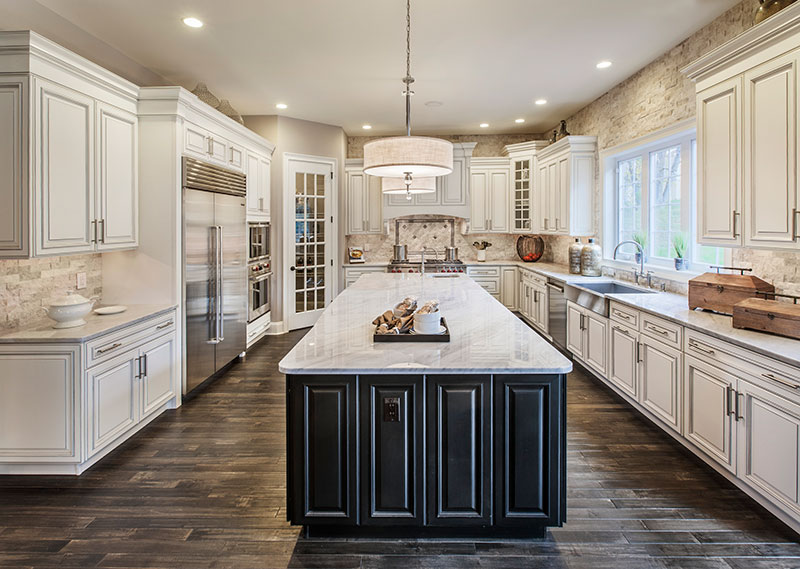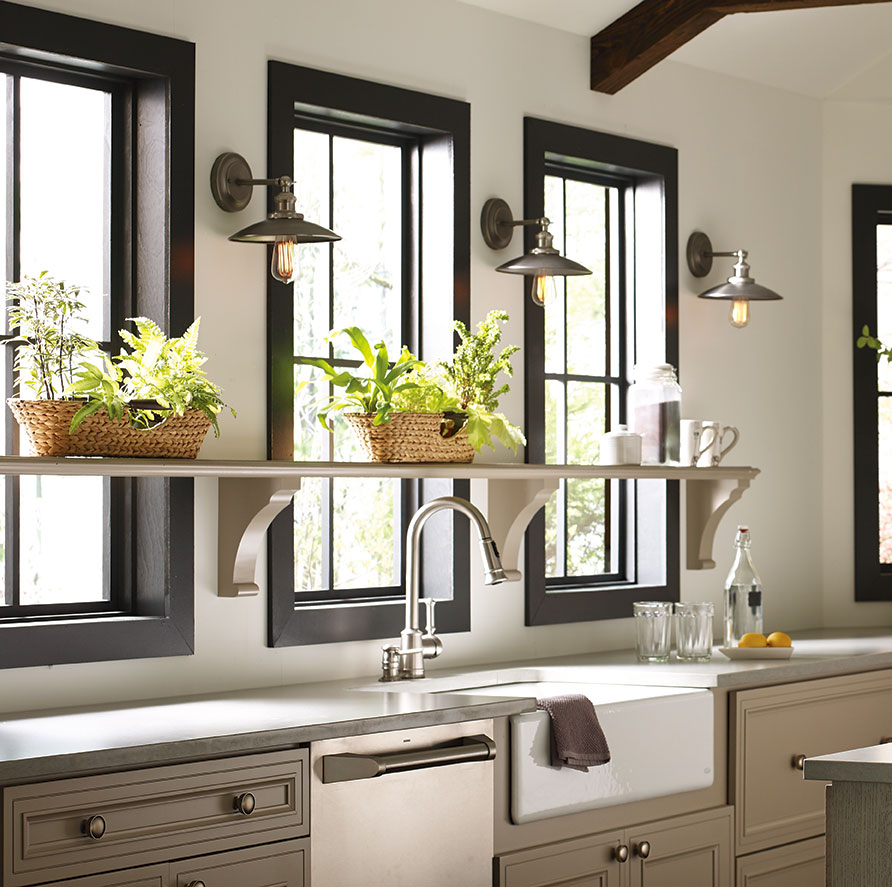Written by Progress Lighting on December 6, 2019
The kitchen and dining rooms are the heart of any home. It's where we cook, entertain, relax, play games, do homework...the list goes on. But how do you choose lighting that makes the most of these areas, day or night? Read on for some tips. Start your lighting plan in the kitchen. Especially with today's open concept homes, the kitchen is a focal point and its lighting spills over into other spaces. Whether by accident or intent, it is important not to over-light this space.
Here's how to light some common kitchen layouts.

Era pendants shown | Image: Susan Wilson, Kirbor Homes
L-Shape Layout Light layering is essential to properly light an L-Shaped kitchen. Ambient or general light comes from recessed ceiling lights, plus natural daylight. Then, add under cabinet lighting to provide task lighting on countertops. Hang a decorative pendant over the kitchen sink for task and accent lighting. Finally, add toe kick lighting to create a clearly lit path at night.

Status pendants shown | Image: Toll Brothers
U-Shape Layout U-shaped kitchens have an even, three-walled design that creates balance and symmetry. This layout creates a functional work triangle in the space between the range, refrigerator, and sink. It maximizes countertop space, so it is essential to install lighting under cabinets to evenly light the counters. A single pendant can be placed over the sink to provide illumination and a decorative element. In a larger kitchen, place pendant lighting over the peninsula. Consider adding a step light to the side of the cabinet to provide another layer of lighting.

Archives wall sconce shown
Single Wall Layout Single wall kitchens are more prevalent in condominiums or smaller homes. However, lighting can be a challenge, and it's a good time to think outside of the box. Try placing three sconces above the sink for visual appeal and functionality. Use under-cabinet lighting under upper cabinetry in a single wall kitchen design to provide necessary task lighting.

Inspire chandelier shown
Dining Areas Just like in every room, properly layering light is important in the dining area. Start with general lighting, such as recessed, flush mount, track or cove lighting, then add wall sconces and table lamps as accent lighting. The dining room's task lighting is the light fixture over the dining table, and it is usually the showpiece of the room. Not only is it the focal point, but it also provides even light distribution and direct illumination for diners. Multi-light chandeliers are available in a range of different designs, from traditional to contemporary, and in all sizes. Use dimmers to create ambiance and to control each layer of light separately. If possible, place the wall and accent lighting on one dimmer and the general lighting on a second dimmer. Use the third dimmer for the over-the-table fixture. Need to know how high (or low) to hang your lights? We'll show you how,
here.